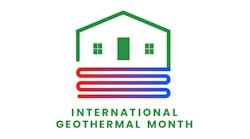Latest from Green
Sponsored
By Trey Cutler, Business Development Representative, Niagara
“When the well’s dry, we know the worth of water.”
– Benjamin Franklin
If you read the news, it’s probably no surprise to you to hear that we are in a water crisis. Just by looking at these screenshots from the US Drought Monitor, comparing the last 10 years and the progression of drought, it’s plain to see that we have a huge problem on our hands. But how much impact can just one person have?
According to the EPA, the average American uses around 88 gallons per day per person, or 10,500 gallons a month for a family of four. That’s enough water to fill up a common-sized pool every month.
exceed 2.5 gallons per minute (GPM), and showerheads could not supply more than 2.5 GPM. Before that toilets used as much as 7 GPF, and even now the average flush can be upwards of 3 GPF. The current baseline for an efficient toilet is considered to be 1.28 GPF, however, some toilets flush even more efficiently than this baseline.
Additionally, southwestern state governments (Arizona, Nevada, Utah, etc.) are looking to cut their water usage by a full 25% after the most recent reports on Lake Mead and the Colorado River have shown the protracted drought in the region has reached a new point of crisis. Reducing lawn watering can only cut back so far—so where else should homeowners look to save money on their water bills and stay up to code?
The answer: toilets.
Looking at Leaks
Not everyone can switch to a gray water system and surprisingly the common commode is responsible for over 30% of indoor water usage, and at least 13% of all leaks. A leaky toilet can be responsible for huge amounts of water waste, mainly because it can go undetected since it is usually categorized as a “silent leak.” It’s been proven that if a household switches to high-efficiency models, over 4,400 gallons of water can be saved annually, and there have even been cases where it can cut water usage by over 55% even in older buildings.
As professionals in the plumbing industry, it is our job to fully educate our clients—and anyone who will listen, really—about common toilet leaks as well as how to choose the best model to replace any non-fixable toilets.
There are three common places to look for a leak:
1. The flapper
2. The supply line
3. The fill valve
All three of these leaky spots are usually avoidable depending on the materials the product manufacturer uses. For example, if the manufacturer uses plastic fill valves, like FluidMaster’s models, they’re less likely to wear down over time or rust and crack.
However, if the model you keep on your truck is a flapper-style toilet, you’re more than likely going to have to deal with callbacks since flappers don’t always seal to the flush valve and tend to be the most common thing in a toilet that needs replacing. Flapper toilets are the most common residential option on the market, but in the last ten years, vacuum-assist toilets have been gaining more popularity and have been proven to rid plumbers of time-wasting callbacks.
Balancing Act
Many jobs or projects need to balance both flushing/carrying power with water efficiency when it comes to toilets. Vacuum-assist toilets provide both. When flushed, the water exiting the specialized chamber within the tank creates a vacuum, depressurizing the trapway, and allowing waste to be pulled through the trap. This allows vacuum-assist toilets to use substantially less water; some models even use as little as 0.8 GPF, while still flushing two pounds of waste or more.
Vacuum-assist toilets are becoming more favored in a variety of applications for several reasons, but the powerful, quiet flush paired with efficient water use is typically the main decision driver. With no change in customer use, a powerful flush is achieved while reducing the amount of water used, creating remarkable cost savings throughout the life of the toilet.
Whether or not you go with a flapper or a vacuum-assist toilet, one way to ensure that you’re providing a good solution to your customer while offering them the option to potentially use a rebate is to only use products with WaterSense certifications. The EPA WaterSense Program mandates that plumbing fixtures drive innovation, conservation, and elimination of waste. Designed for companies and consumers who are committed to conserving water, a separate EPA certification process is required to earn the WaterSense label. For a toilet to be WaterSense certified, it must flush at or under 1.28 GPF and pass a rigorous round of performance tests.
The Difference a Plumber can Make
While one individual can save a few thousand gallons of water a year, a plumbing professional can influence hundreds—if not thousands—of people to save water, effectively helping to save millions of gallons of water in the course of your career. While it may seem insignificant, just by choosing to install only WaterSense-certified products and by taking the time to educate your customers on water-saving products, plumbing professionals are in the unique position to help our nation cut down on a significant amount of water use. Your expertise can help your customers make informed decisions on what’s best for their homes and subsequently for our environment. Our wells are running dry already—be sure you’re doing your part to keep them filled.
Trey Cutler serves as a Business Development Representative for Niagara. With over ten years in the plumbing and contracting industry, Trey is an expert on property ownership and disposition, as well as single and multifamily construction. He is a passionate conservationist who is dedicated to conserving the world’s resources and providing a better, healthier living experience for all.





